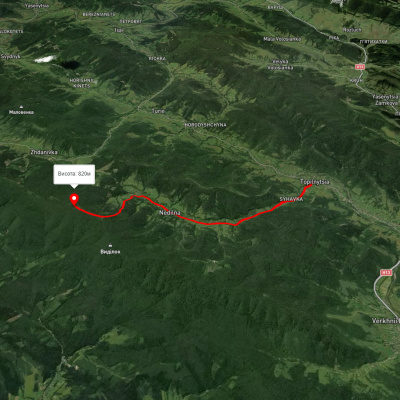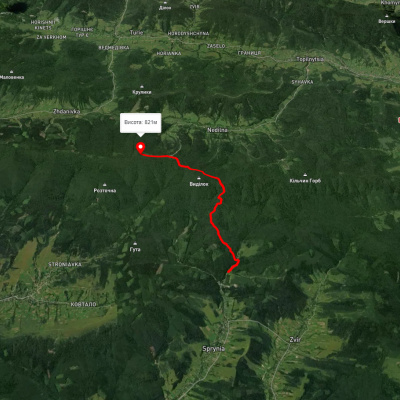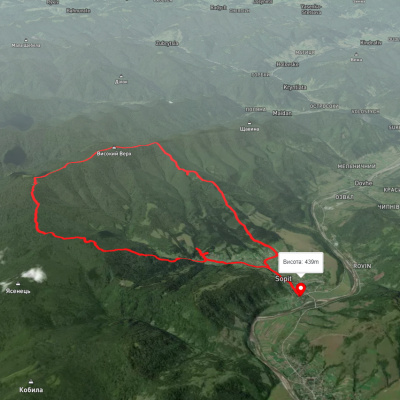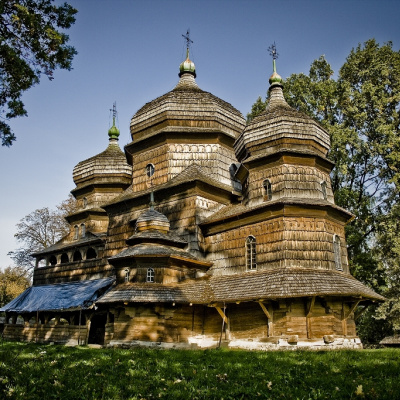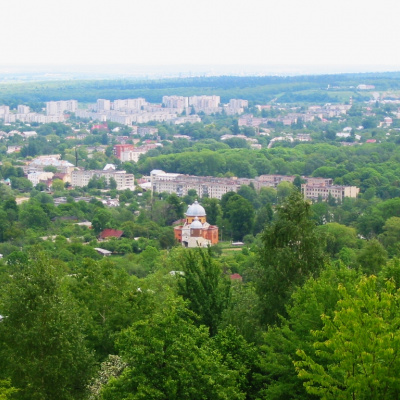Drohobych district
Drohobych district is a district of Ukraine in the southwest of Lviv region. The district and administrative center is the city of regional significance Drohobych. There are two other cities of regional subordination within the district: Boryslav and the resort of Truskavets. The Drohobych district also includes such tourist locations and settlements as Skhidnytsia resort, Rybnyk, Volya Yakubova, Novyi Kropyvnyk, Staryi Kropyvnyk, Modrychi, Nahuyevychi, Derezhychi, Dovhe, Lishnya, Maidan, Dobrivlyany, Hlynne, Opaka, and Stebnyk. The district is bordered by the rivers Stryi, Tysmenytsia, Bystrytsia, Bar, Kolodnytsia, and Solonytsia. The northern part of the district is located within the Drohobych Upland, and the southern part is located in the Eastern Beskydy.
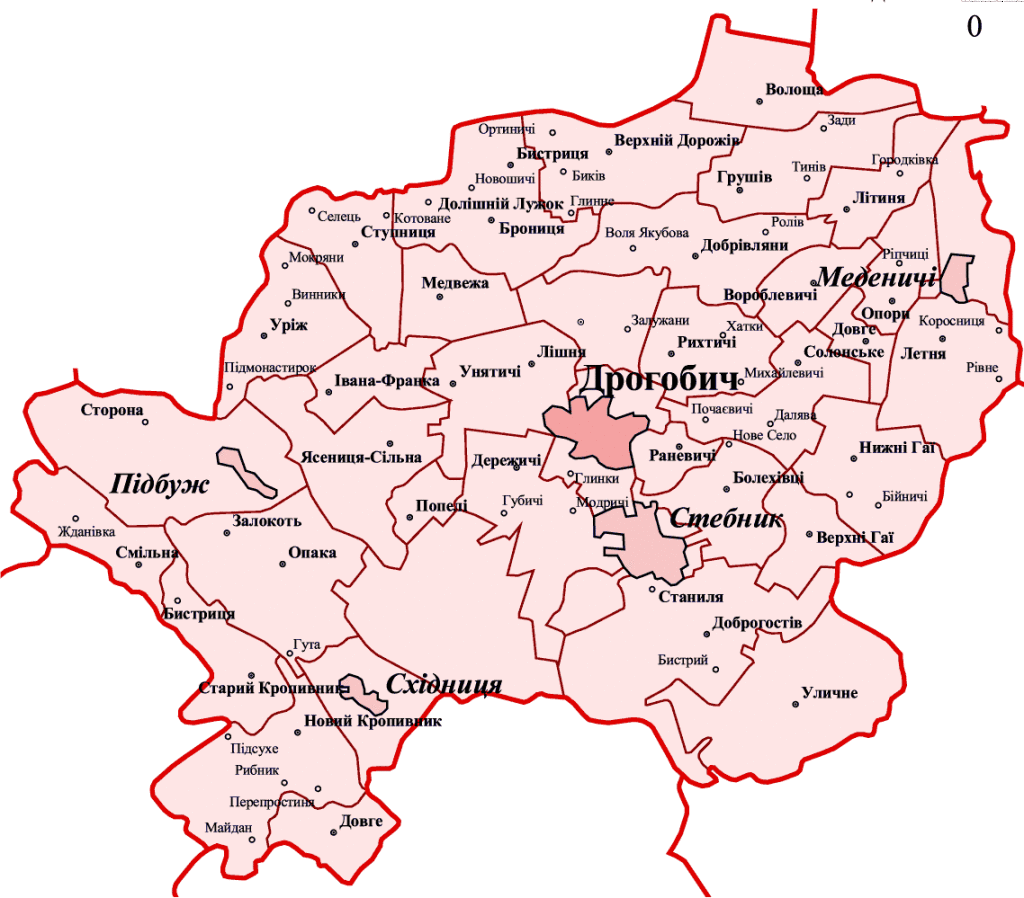
- Numerous monuments of Drohobych, including the Church of St. George, a UNESCO World Heritage Site
- The highest waterfall in Lviv region on the Laznyi stream (12 m) near the village of Dovhe
- Church of the Nativity of the Blessed Virgin Mary (1773), Voroblevychi village
- Church of St. Elijah (1698) with a bell tower; Monastyr-Lishnyanskyi village, N49.38434 E23.43503
- The Church of the Assumption of the Blessed Virgin Mary (1644) with a bell tower, Medenychi village
- Church of the Intercession of the Virgin (seventeenth century), Popeli village
- The Church of the Cathedral of the Blessed Virgin Mary (1700) with a bell tower (XVIII century), Selets village
Які туристичні (пішохідні) маршрути проходять через/біля Drohobych district?
Пропонуємо пройти такі туристичні (пішохідні) маршрути через/біля Drohobych district: Недільна - Вежа Пам'яті, Сприня - Каплиця - Вежа Пам'яті, с. Сопіт, через Сопітські полонини до с. Сопіт, с. Кам'янка, через г. Лопата, м. Сколе, г. Парашка до с. Крушельниця, с. Корчин, через вдсп. Гуркало, г. Парашка до с. Крушельниця, м. Сколе, через г. Парашка, вдсп. Гуркало, с. Корчин до с. Верхнє Синьовидне
